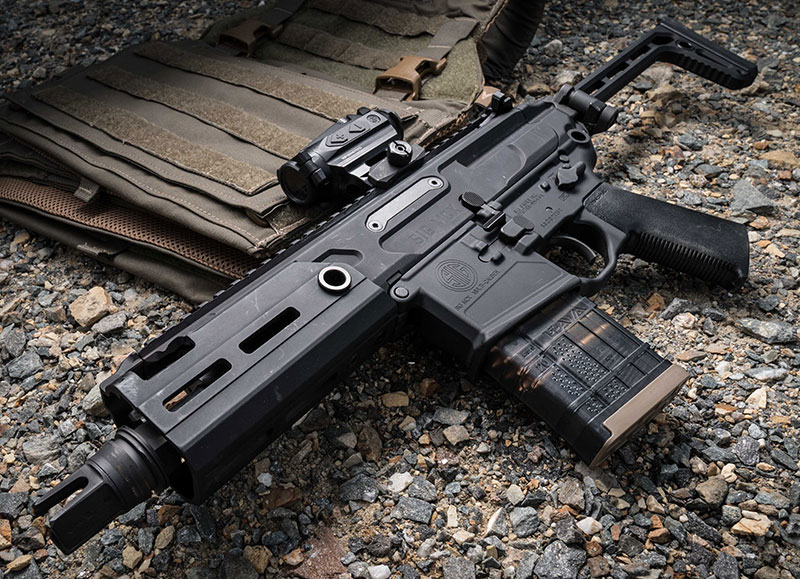The revolutionary SIG SAUER® MCX Rattler was designed from the ground up to be as discreet as possible while retaining all of the capabilities of the company’s MCX platform. The MCX Rattler has its origins in a request from the US Special Operations Command (SOCOM) for a Commercial Off The Shelf (COTS) conversion kit for the M4A1 to create a Personal Defense Weapon (PDW).
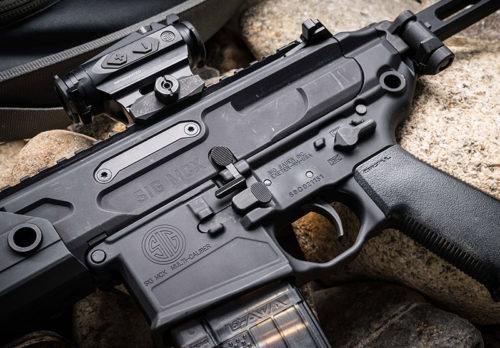
There were initially no plans to make it available on the commercial market. SIG now not only offers a select-fire MCX Rattler for government end-users, but also semiauto only SBR (Short Barreled Rifle) and “pistol” versions for sale to the general public.
The MCX Rattler versions feature a 5.5-inch (13.97 cm) barrel with an 1:5 inch (1:12.7 cm) twist. It has a SIG PDW upper that lacks the forward assist found on other MCX models. The brass deflector has been reduced in size. Although the MCX Rattler was initially offered commercially in 300 BLK only, it’s now also available in 5.56 NATO.
Origins of the MCX Rattler
The MCX Rattler is a derivative of the SIG MCX VIRTUS, itself a refinement of the original MCX design, which was also conceived to meet the requirements of SOCOM. The MCX platform has proven very successful and has been adopted by many elite units, including the US Navy SEALs, British Special Air Service (SAS), and a unit within the London Metropolitan Police Counter-Terrorist Specialist Firearms Officer Programme, among many other special forces units around the world.
The MCX platform features SIG’s proven internal recoil system, which offers reduced recoil and a compact platform compared to the conventional AR buffer spring system. The MCX has a self-regulating short-stroke piston and a fully-locked and closed rotating bolt system.
The MCX platform also features a hammer-forged barrel with a nitride treatment for increased barrel life. All operating controls are amibidextrous and are located similar to those on a standard AR. The upper receiver is hardened in select areas and utilzes replaceable parts in areas subject to the most wear.
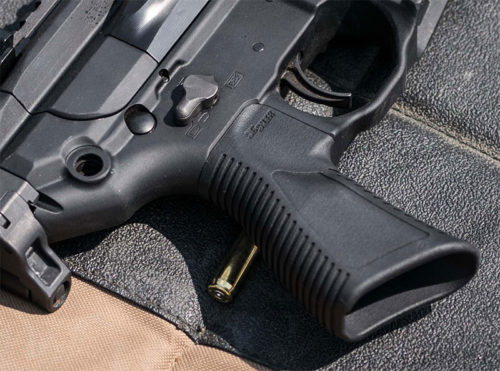
The MCX VIRTUS has a number of upgrades over the legacy MCX. Upgrades include a tapered-lug bolt group, two-stage SIG Matchlite™ Duo trigger, thicker receiver and barrel, free floating M-LOK® handguard, and modified gas port position. The forward assist and brass defector are now modular. The feed ramps of the barrel extension are part of a hardened steel implant that bolts to the upper receiver and mates with the barrel extension.
Due to the changes, legacy MCX barrels can’t be used with the MCX VIRTUS. However, MCX VIRTUS barrels are backwards compatible with legacy MCX rifles. If you purchase a VIRTUS barrel, it includes a compatible bolt with tapered lugs. The gas valves aren’t in the right position to adjust through the windows, but they will work.
The modular MCX VIRTUS is configurable in more than 500 combinations. It was engineered for unmatched reliability. It’s designed to perform beyond 20,000 rounds without the need for replacement parts.
The Diminutive MCX Rattler
The diminutive MCX Rattler SBR has an overall length of 23.5 inches (59.69 cm) with the stock extended and weighs just 5.7 pounds (2.59 kg). It’s equipped with an ultra-thin skeletonized aluminum folding stock for easy concealment and stowage. Per SOCOM requirements, the MCX Rattler measures under 17 inches (43.18 cm) in overall length with the stock folded. It’s small enough to fit in a briefcase or small backpack.
The MCX Rattler features a unique-looking pistol grip that SIG designed specifically for it. It’s more vertical than the grip on the MCX / MCX VIRTUS. This provides better ergonomics and control on the smaller weapon with its shorter length of pull that’s held closer to the body.
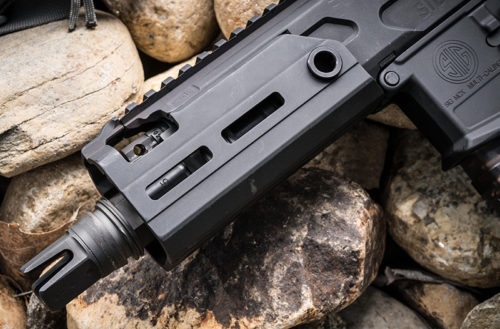
Clearing Up Some Misconceptions
A lot of misconceptions about the MCX Rattler and its design parameters are circulating on the web and in print media. Let’s see if we can clear a few things up. The MCX Rattler chambered in 300 BLK was built for a specific group of end users who needed a rifle as short and compact as possible. Contrary to what you may have heard or read, this requirement didn’t include quiet.
They were using a specific ammo (a non-commercially available round with a Barnes 110-grain bullet) designed for a short-barreled rifle. The system didn’t require suppressed or subsonic function. It didn’t have to last more than 1,000 rounds.
As the development progressed, the interest from additional end-users grew and the requirements shifted. The ammo requirement remained the same, but the desire for a suppressor was added. Through their hard work, the design team at SIG was able to create a platform that could do more than anyone thought possible.
Piston Versus Direct Impingement
The MCX Rattler features a two-position adjustable gas regulator. The first position is for unsuppressed operation. The second position is for suppressor use. Adjustments are done through windows in the handguard.
Just like a direct impingement (DI) rifle, a piston-operated rifle uses gasses from the fired round to cycle the action. The differences between the two are where the gasses are performing the work, where the excess gasses are directed to, and how much gas is required to cycle the action.
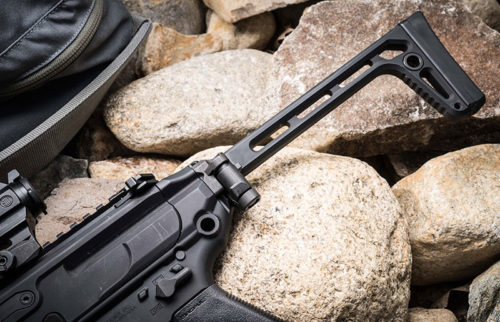
Although adjustable gas blocks are available, with a DI system you generally have a fixed gas system that’s controlled by the barrel’s gas port size. Irregardless of the ammo you are using, you have a fixed system in which the only variable allowed is the pressure at the gas port. The result is a system that will cycle faster with high-pressure ammo and slower with low-pressure ammo.
When designing a DI system, the designer must decide where to sacrifice performance for function. If the system is ported for higher-pressure ammo, the rifle won’t function properly with low-pressure ammo and will short cycle. If the rifle is ported for high-pressure ammo. The rifle will over-function, putting excess load on the system and causing premature parts failure/breakage.
One of the benefits of a piston/valve system is the operator’s ability to adjust the gas system to meet the needs of the mission. The multi-position gas valve essentially creates multiple gas ports.
The closer the gas port is to the chamber and the shorter the barrel, the more rapidly the pressure curve changes. In the case of the MCX Rattler, the gas system needs to function with a larger variety of ammo in a 5.5-inch (13.97 cm) barrel.
A suppressed system, whether DI or piston, is affected the same way. The pressure is higher for longer than it would be if it weren’t suppressed. With a very short barrel, the addition of a suppressor changes the gas pressure substantially, even when using the same ammo. After extensive engineering and testing, SIG was able to balance the recoil system and gas system to allow reliable function with a variety of ammo.
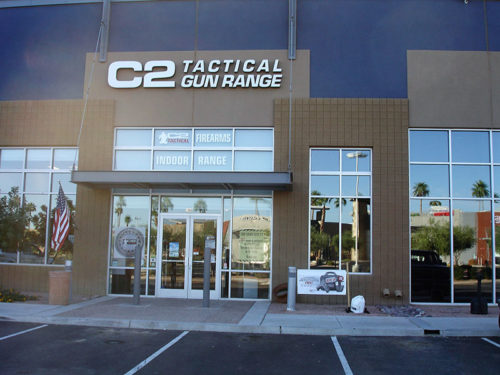
There’s some crossover in pressure between commercially available supersonic ammo when unsuppressed and subsonic ammo when suppressed. Because of this overlap, the MCX Rattler does function reliably with subsonic ammo when suppressed.
In accordance with SIG’s products requirements for the MCX Rattler, it’s capable of reliably shooting supersonic ammo suppressed and unsuppressed, and subsonic ammo suppressed in a variety of environmental conditions. It’s also able to shoot some subsonic ammo reliably under some operating conditions, but not reliably enough to meet SIG’s very stringent reliability requirements.
If you intend to shoot suppressed 100% of the time, SIG recommends that you consider the MCX VIRTUS with 6.7-inch (17.02 cm) barrel. It’s better suited for that mission and is fully configurable to the rest of the MCX VIRTUS platform configurations.
At the Range
I arranged to have a MCX Rattler SBR in 300 BLK transferred from SIG to C2 Tactical for my evaluation. C2 Tactical is a FFL/SOT that I often work through, as well as a SIG SAUER® Elite Dealer. With locations in Tempe and Scottsdale, C2 Tactical has been voted Best Indoor Range in Arizona.
C2 Tactical has a 25-yard (23 m) state-of-the-art air-conditioned indoor range with advanced ventilation, state-of-the-art simulators, full retail store (including NFA items), gunsmith services, numerous training course, and much more. They’re great people and have graciously provided the use of their range for my evaluations.
SIG provided me with 200 rounds of SIG 125-grain OTM Elite Match Grade 300 BLK ammo for my evaluation. It features match-grade brass cases and Sierra MatchKing® designed to run with all NATO STANAG magazines.
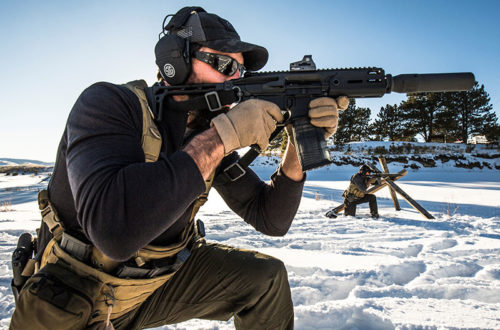
The MCX Rattler shipped with a single 30-round Lancer Systems L5 Advanced Warfighter Magazine® (L5AWM®) 300BLK 30 Magazine. The Rattler ships without sights. C2 Tactical provided me with a SIG Romeo 5 RDS (red dot sight) for use during my evaluation.
The MCX Rattler performed flawlessly at the range. There were zero malfunctions. The gun handled and shot exceptionally well. Muzzle blast, while still pronounced, was far less than I had expected from a barrel this short. The factory flash hider did an exceptional job of reducing muzzle flash.
One story that made the rounds, is that the MCX Rattler got its name from the teeth rattling it produced when fired on full auto. My experience with the MCX Rattler doesn’t bear this out. The fairly thick rubber butt pad and ergonomics of the gun did a good job in reducing felt recoil and aiding in control.
As previously mentioned, the MCX Rattler has the same trigger as the MCX VIRTUS. SIG specifications for the weight of the trigger pull are five to nine pounds (2.27 to 4.08 kg). I have read differing reports about the trigger, with some users reporting rough, heavy triggers on the Rattler. I didn’t find the latter to be the case.
The trigger on the MCX Rattler SBR that I was provided with for evaluation was quite good. Although I didn’t measure the trigger pull weight, I would the pull as being between five and six pounds (2.27 to 2.72 kg), with a crisp break.
Aftermarket triggers are available. Geissele offers its Super MCX SSA trigger. The Super MCX SSA trigger is high performance a non-adjustable two-stage trigger with a total pull weight range of 4.25 to 4.75 pounds (1.93 to 2.15 kg). It’s derived from the Geissele CRANE Safety Certified Super Semi-Automatic (SSA) M4 Carbine trigger.
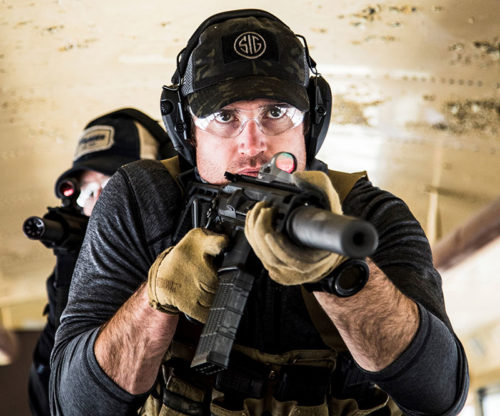
The MCX Rattler SBR is inherently accurate, with five-shot groups averaging under 0.5-inch (1.27 cm) at 25 yards (23 m) with the SIG 125-grain Match ammo. SIG wisely went with the 1:5 twist to stabilize the bullets in the very short barrel.
Although I didn’t chronograph the rounds, SIG states that the 125-grain Match load runs about 1,767 feet per second (539 m/s) in their internal testing and, if anything, they expect one might see even higher velocities.
The design parameters of the 300 BLK make it an ideal round for shorter barrels (where the 5.56 NATO is especially lacking) and for suppressed applications. Supersonic loads provide ballistic performance approximating that of the 7.62×39, while subsonic loads vastly outperform the 9x19 NATO round for suppressed applications.
Although the 300 BLK was developed around standard AR15/M4 magazines, they were designed for 5.56 NATO, which limited performance and compatibility. While some 300 BLK rounds function reliably in 5.56 NATO magazines, others don’t interface correctly with the contact areas of the magazine. Dust and fouling exacerbate the problem, especially with subsonic rounds and with monolithic bullets.
The Lancer L5AWM® 300BLK 30 Magazine is purpose designed for the 300 BLK to work with to the wide variety of projectile weights and shapes that may be encountered. The Magpul® PMAG® 30 AR 300 B Gen M3™ is another outstanding magazine purpose designed for the 300 BLK..
Final Thoughts
The MCX Rattler is definitely the coolest kid on the block. It’s a heck of a lot of fun to shoot. However, it’s a niche firearm designed with a special mission. It serves that mission very well. Certain Tier One units obviously agree. It’s an outstanding platform for applications where rifle caiiber performance is needed and compactness and close quarters maneuverability are paramount. Obviously there are trade-offs.
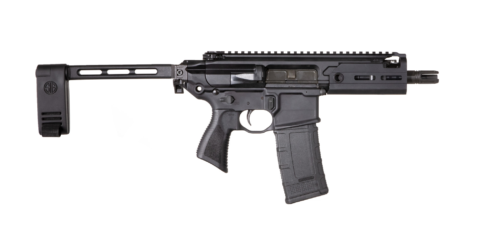
Readers may also want to consider the MCX Rattler PSB pistol with SIG’s own in-house developed pistol brace called the “PCB” Pivoting Contour Brace. Unlike the SBR, the MCX Rattler PSB isn’t subject to NFA regulations. And subject to state and local laws, it may be carried as a pistol under circumstances in which a rifle (SBR or not) may not be carried.
The MCX Rattler SBR has a MSRP of $2,727.00. As with all SIG SAUER® firearms, it’s covered by a limited lifetime warranty.
Specifications
SIG MCX Rattler SBR
Manufacturer: SIG SAUER®
Model: MCX Rattler SBR
Type: Semiautomatic (Select Fire Available) Short Barreled Rifle
Operating System: Piston w/ Two-Position Adjustable Gas System
Caliber: 300 BLK (5.56 NATO Available)
Magazine Capacity: 30 Rounds (Standard Magazine)
Barrel Length: 5.5 in. (13.97 cm)
Barrel Twist: 1:5 in. (1:12.7 cm)
Overall Length w/ Stock Extended: 23.5 in. (59.69 cm)
Overall Width: 2.0 in.(5.08 cm)
Height: 8.0 in. (20.32 cm)
Weight (empty): 5.7 lbs (2.59 kg)
Handguard: Free- Floating M-LOK®
Stock: PDW Ultra-Thin Skeletonized Side-Folding Aluminum Stock
Receiver Finish: Mil Spec Type III Hard-Coat Black Anodized
Warranty: Limited Lifetime
MSRP: $2,720.00
Material Disclosure
I received this product on loan as a courtesy from the manufacturer so I could test it and give my honest feedback. I am not bound by any written, verbal or implied contract to give this product a good review. All opinions are my own and are based off my personal experience with the product.
*The views and opinions expressed on this website are solely those of the original authors and contributors. These views and opinions do not necessarily represent those of Spotter Up Magazine, the administrative staff, and/or any/all contributors to this site.
Photos courtesy SIG SAUER® unless otherwise noted.

